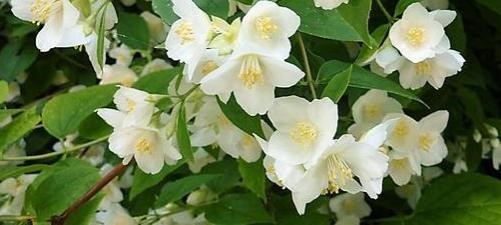These flowers grow in the form of deciduous shrubs. The growth pattern of mock orange is dense. Additionally, its leaves are dark green, oval and serrated. It is flowers that possess four flowers. The preferred season for these flowers is the end of spring and early summer. The fragrance of these Philadelphus coronarius is sweet. Due to which many gardeners love to grow this plant.
Suitable condition to grow:
This plant doesn’t prefer soggy soil but thrives to grow in moist soil. After their full development, these flowers can tolerate drought. During drought water this plant properly. Sunlight is also fundamental for its healthy growth.
Origin: Mock orange flowers are primarily available in Southern Europe.
Common Names:
The other names of Philadelphus coronarius are
- English dogwood
- Sweet mock orange
Scientific Name: Philadelphus coronarius L is its scientific name.
Family: These flowers belong to the Hydrangeaceae family.
Genus: Philadelphus
Species: coronarius
Sun exposure: The average sunlight is fundamental. Moreover, partial shades are also recommended.
Habitat: Sweet mock orange is generally grown in woodland screes and hot rocky mountains.
Uses:
- The leaves of sweet mock orange contain high saponins. When their leaves are crushed and dissolve in water it becomes a lather ideal for cleaning clothes.
- It can be used to wash our hands.
- Another important aspect of the leaves of this plant is that they can be used as wood polish or a duster.
Tips:
There are some tips for these Deciduous shrubs better growth:
- This plant grows easily in any moderate soil.
- Heavy clay soil is also best for these flowers.
- Full sunlight is required for proper blooming.
- Fast-growing shrubs and doesn’t need high care.
Frequently Asked Question:
Is it poisonous?
No, according to recent research sweet mock orange doesn’t have any toxic elements.
Is English dogwood grows fast?
Yes, these are deciduous shrubs that grow speedily. And per year its height increases up to 24”.

